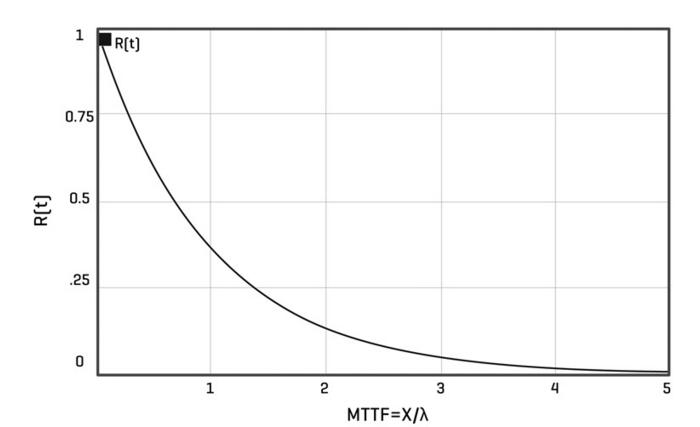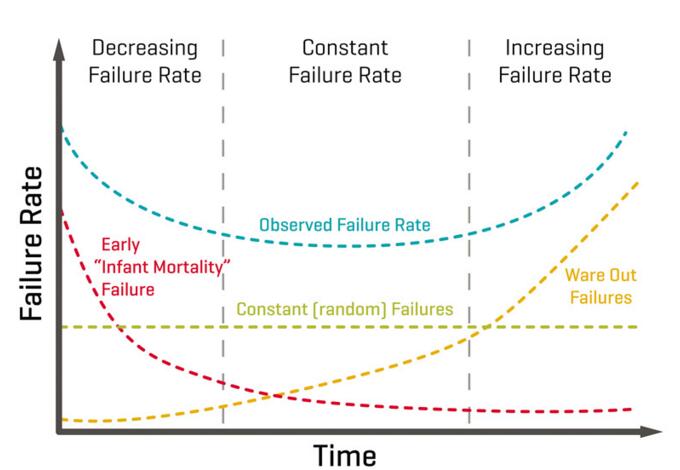The data sheet is the perfect repository for comprehensive, tested and validated information on the performance of components, modules or systems. In the case of a power supply unit (PSU), the data sheet provides engineers with a number of performance parameters, including ripple and noise, efficiency, regulation accuracy, isolation voltage, electromagnetic emissions, and more. The amount and level of detail provided provides a great deal of confidence in the user's ability to achieve the desired performance in any given application.
But another important performance parameter – what about power reliability? In fact, power supply units (PSUs) from today's leading manufacturers offer an extremely long life. Its lifetime is accurately predicted under the test conditions specified by reliability standards such as MIL-HDBK-217 or Telcordia. More importantly, experience has shown that in addition to these strictly defined parameters, the high quality power unit PSU also provides an extremely long life.
However, system designers still face a problem: How do they confidently predict the average life of a power supply unit (PSU) when operating under conditions other than these test conditions? A variety of common factors can break these conditions, such as: heat, shock and vibration, transient fluctuations in power supply voltage, aging of electrolytic capacitors, etc. may cause premature failure. Therefore, the standard life rating of the data sheet is rarely fully applicable to real-world products.
At the same time, it is unacceptable to be unable to control the reliability of the final product. The brand's reputation is a valuable asset. The environmental and cost costs of disposal and maintenance are also a waste.
So, how can system design engineers confidently estimate the reliability of commercial off-the-shelf (COTS) power supply units? And what is the most effective way to maximize confidence?
Manufacturer's reliability data limits
The most commonly used value to characterize the lifetime of a new COTS PSU is the pre-fault mean time (MTTF) or mean time between failure (MTBF) values. The mean time before failure (MTTF) is typically thousands of hours at constant operating (ambient) temperatures.
Of course, the pre-fault mean time (MTTF) does not give the expiration time of any single cell randomly extracted from a large number of cells: MTTF is an average. Some units have a longer life than the rated MTTF and some will fail earlier. In fact, assuming a constant failure rate is an impractical assumption under the operating conditions of an electronic device, the probability that a single unit's lifetime can last to the MTTF value is only 37%. In other words, after 69% of the pre-fault average time (MTTF), half of the units will fail, as shown in Figure 1.

This is because faults with a constant failure rate are characterized by an exponential factor, as shown in the following equation, for calculating the probability that a component will not fail after a given time: R(t) = e-λt
among them:
λ = average failure rate of components
PSU manufacturers use models based on highly accelerated tests to predict the failure rate of their products. They cannot run the PSU test under normal operating conditions and wait to observe the failure because it takes many years to collect statistically significant data. As a result, they exposed their products to excessive temperatures, vibrations, currents, and voltage stresses to quickly fail them.
Clearly, a sensible approach is needed to convert the results of the accelerated test into MTTF values ​​in the data sheet; reputable PSU manufacturers should carefully verify and refine their methods to ensure they reflect the user's real-world experience.
So, so far, we may be able to trust the MTTF values ​​in the data sheets specified by trusted manufacturers. But since it is only suitable for very narrow working conditions, it is best to use it only as a comparison tool when choosing among a range of competing products. In other words, the MTTF is suitable for indicating the relative lifetime of different PSUs tested under similar conditions.
However, the true value of the MTTF in any given application is highly dependent on the operating conditions of the application. Temperature has the greatest impact on life, but life is also affected by the absolute level of input and output current and voltage, the rate of change of these parameters, mechanical stress, and other factors.
Thus, although MTTF values ​​are calculated based on a series of "typical" and constant operating conditions, many user applications will operate under the following conditions:
· Full of changes
· Different from the "typical" value
Even if the application has constant conditions, these conditions are almost impossible to be the same as the typical application conditions of the data sheet.
Therefore, when estimating the failure rate in any given real-world application, the failure rate and reliability information in the data sheet can only provide limited utility. Power system designers must design the maximum acceptable failure rate for their end products. Regardless of whether the target failure rate is almost zero (in mission-critical applications) or once every 10,000 hours (in the case of low-cost consumer products), designers must have a high level of confidence to make the actual failure rate on site. At least reach the minimum goal.
As noted above, the MTTF in the datasheet does not provide such a high level of confidence unless under specified constant operating conditions. So how can power system designers be more confident in predicting real-world failure rates? The answer is that part is art and part is science.
Science refers to additional data sets provided by reputable PSU vendors. For example, manufacturers such as Murata Power, Vicor, and CUI provide on-site data: PSU failure rate observations that are declared to be returned for repair or replacement. This statement is based on an inspection of each failed unit and provides an analysis of the cause of the failure.
This statement can help potential users of a particular model of the PSU:
Verify the calculation of the MTTF by examining its correlation with the observed values ​​of the field failure rate, as shown in Figure 2.
Identify specific operating conditions, stresses, or components that may cause most failures

Figure 2: The life of the PSU has three phases: the “early failure rate†is high in the first phase and lasts for about 24 hours. Pre-shipment burn-in avoids these “early failure rate†failures
(Source: CUI, "Reliability Considerations for Power Supplies")
Kara offers a wide range of illuminated and non-illuminated Rocker Switches.Ranging from 4 to 9poles,16VA to 30 amp,with many styles of colors and functions,especially the switches with High-Current and some types which meet the industry standard IP65,IP68. Certifications include UL, CSA, TUV, CE, and more.

Middle-Sized Rocker Switches,Middle Rocker Switches,Economic Middle-Sized Rocker Switches,Universal Middle-Sized Rocker Switches
Ningbo Kara Electronic Co.,Ltd. , https://www.kara-switch.com